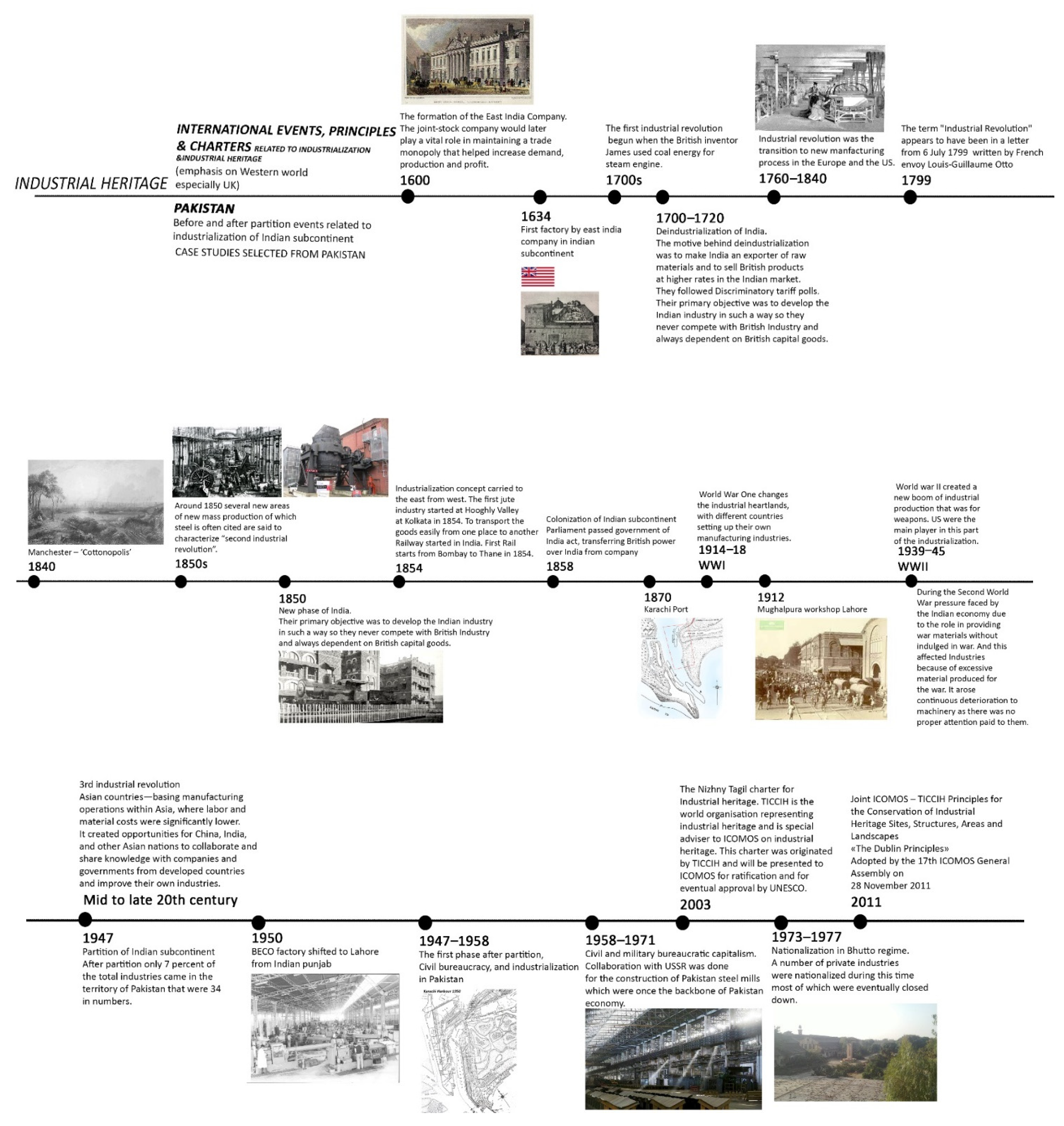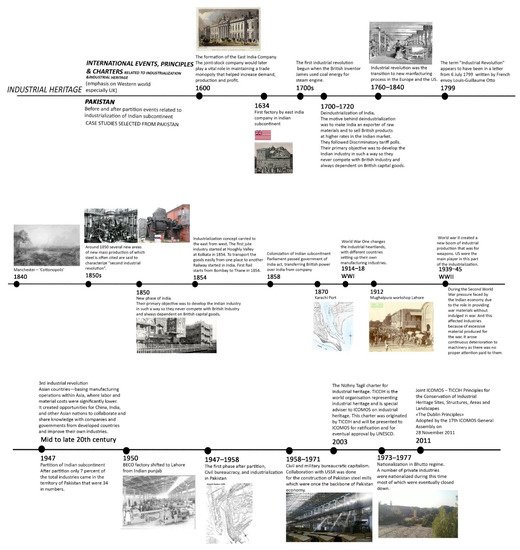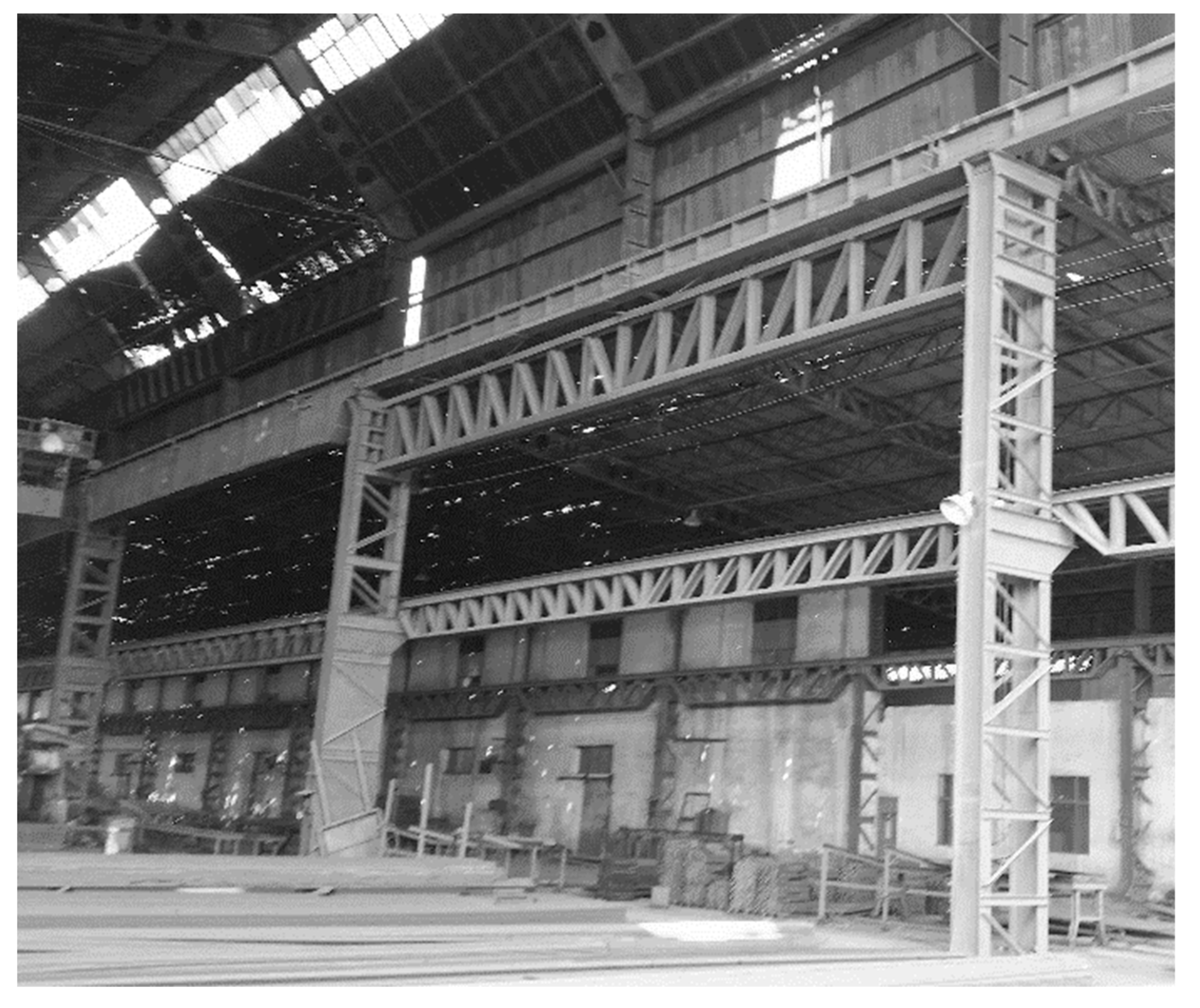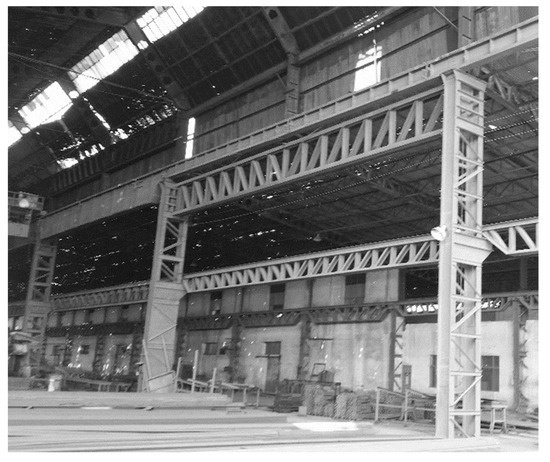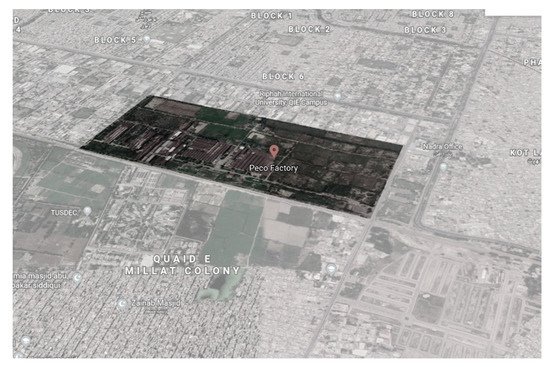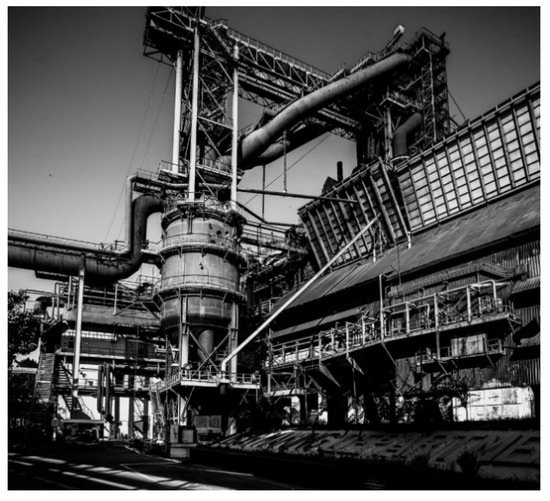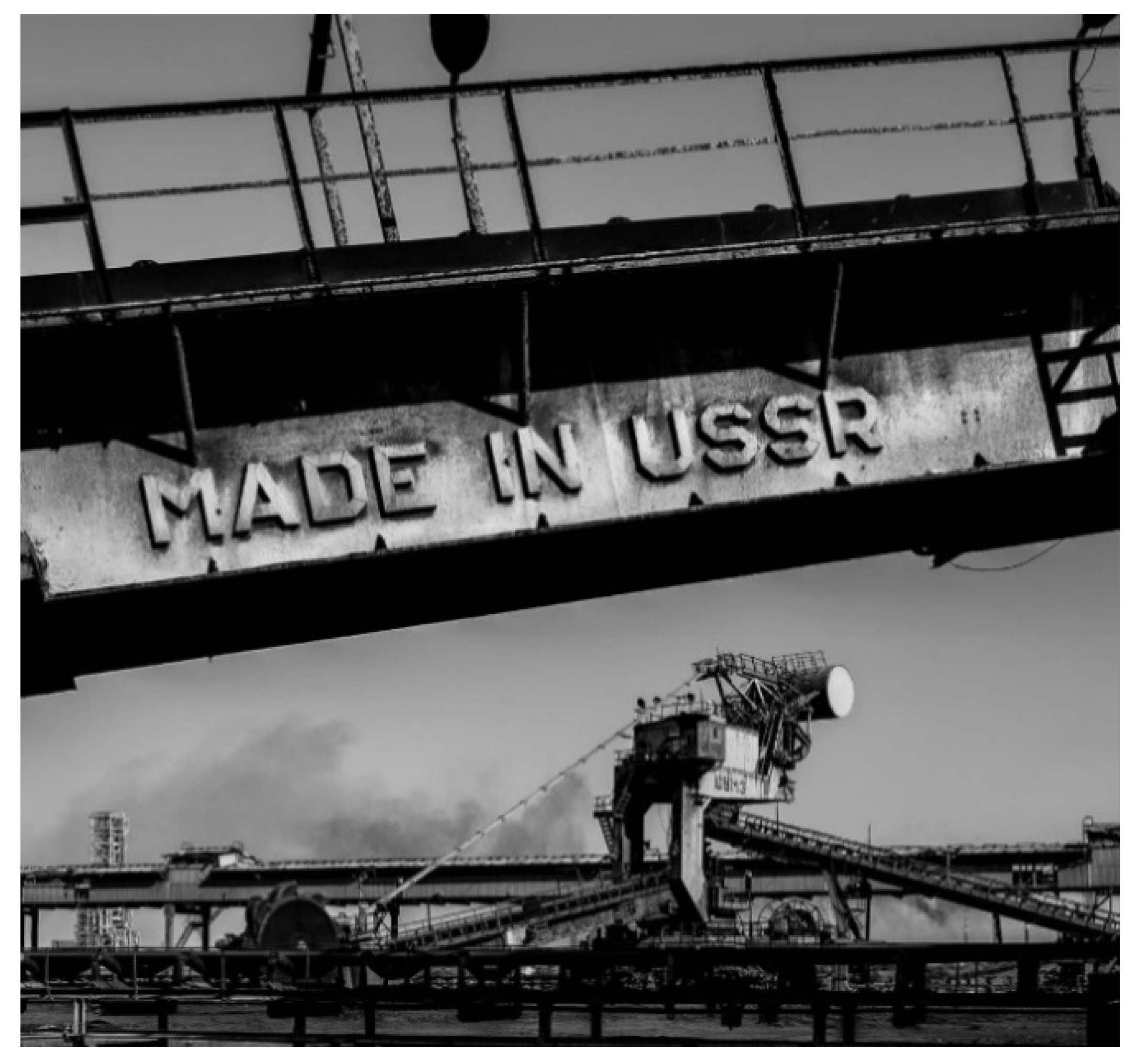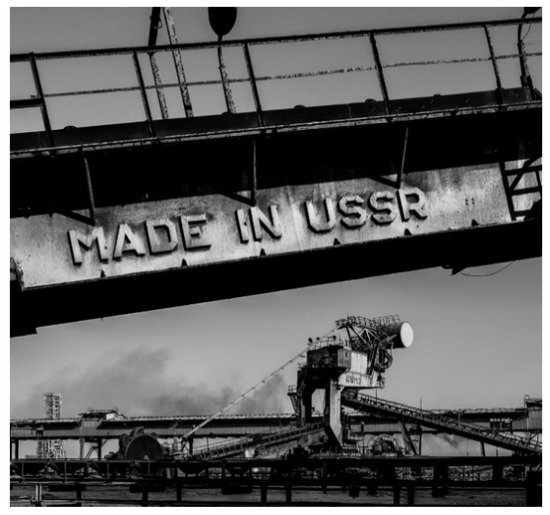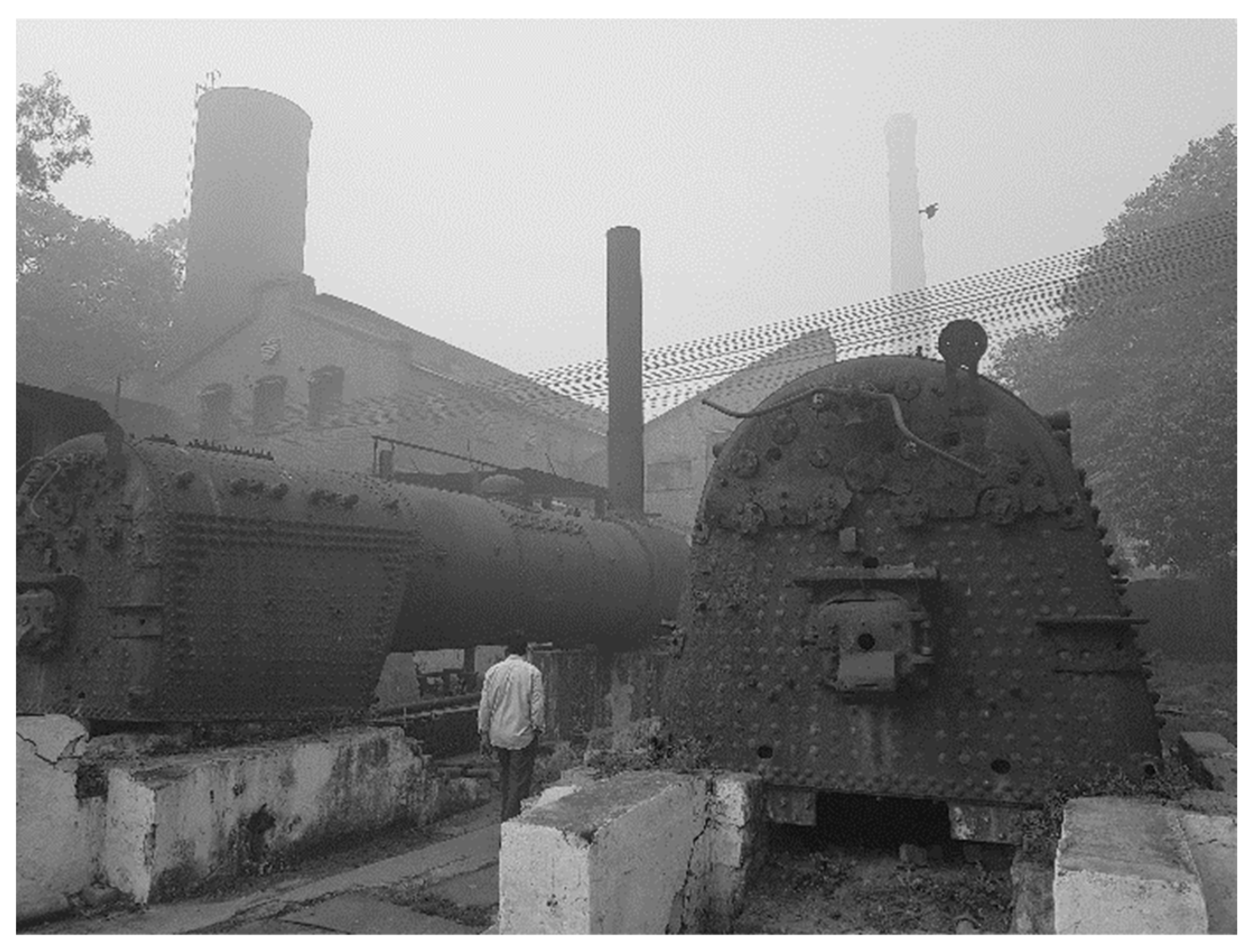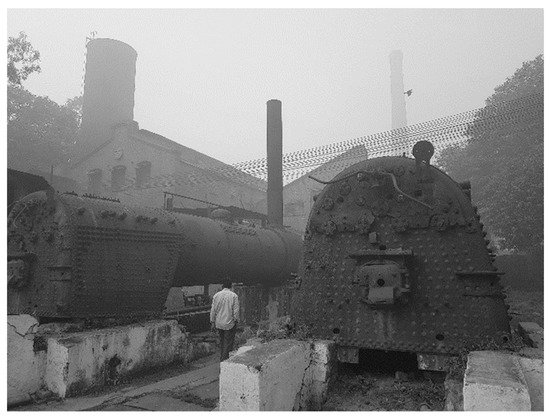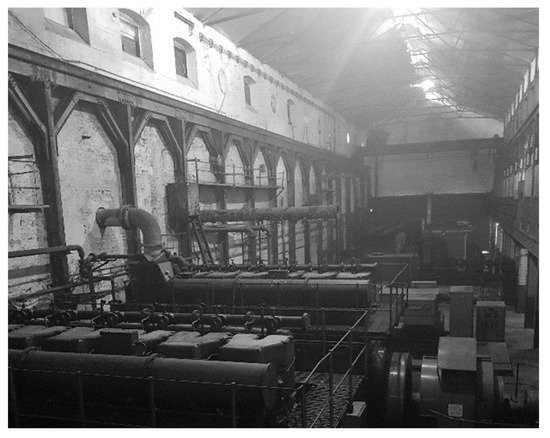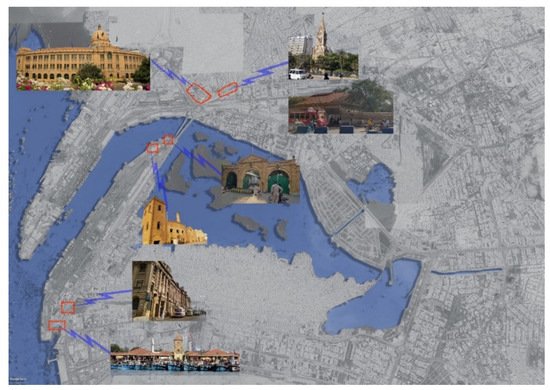Industrial heritage consists of the remains of industrial culture which are of historical, technological, social, architectural, or scientific value. These remains consist of buildings and machinery, workshops, mills and factories, mines and sites for processing and refining, warehouses and stores, places where energy is generated, transmitted, and used, transport and all its infrastructure, as well as places used for social activities related to the industry, such as housing, religious worship or education. The industrial revolution in Pakistan and the major industrial sites and infrastructure of heritage value, such as seaports and railway infrastructure, can be connected to the British rule of the Indian subcontinent. Unlike industrial sites in the Western world, industrial sites in Pakistan are not recognized as heritage sites and are usually ignored by the authorities. They are not currently considered potential sites for future city redevelopment, and the political instruments to offer new programs for such sites are limited. The research objectives are to identify Pakistan's industrial heritage and propose an inventory system for such industrial sites.
1. Introduction
Although industrial sites are recognized around the world as cultural heritage assets (the Nizhny Tagil Charter for Industrial Heritage, July 2003; the Dublin Joint ICOMOS– TICCIH Principles for the Conservation of Industrial Heritage Sites, Structures, Areas and Landscapes, 2011; and the Taipei Declaration for Asian Industrial Heritage, 2012) and their important role in sustainable urban regeneration
[1], they are not yet recognized as potential heritage sites in Pakistan. Work has been conducted on heritage sites by organizations such as the National Heritage and Culture (NH&C) division of the Government of Pakistan, the Heritage Foundation of Pakistan, and the Heritage Cell, a research unit of the Department of Architecture and Planning of Nadirshaw Eduljee Dinshaw University of Engineering and technology (HC-DAPNED) in Karachi, Pakistan. The heritage laws and conservation work conducted to date have been related primarily to archaeological sites, such as the remains of the Indus Valley civilization and the Gandharan civilization in Pakistan. In addition to these sites, residential, commercial, religious, and institutional buildings from the Mughal and British eras have been the focus of attention. However, the term “industrial heritage” is still new in the context of Pakistan’s heritage
[2].
Industrial sites have different heritage values than other types of cultural heritage and are part of the development of the fabric and layers of urban areas. In addition to the fact that industrial heritage has universal value in terms of its impact on human civilization, unique industrial sites have social, architectural, and economic value because of their modern materials, exposed structures, large spans, and urban character. The motivation for protecting industrial heritage is that it is evidence of activities that have changed and are changing
theour way of life and have important historical consequences. In the history of manufacturing, engineering, construction, and distribution, industrial heritage is of technological and scientific value, as well as having possible architectural, planning, and aesthetic value. Industrial heritage provides a sense of identity by reflecting the life of the ordinary men and women of a society. The fabric, building, machinery, components, and setting in the industrial landscape carry the tangible values of industrial heritage; the written documentation, records, human memories, skills, and customs carry its intangible values
[3]. Understanding the heritage value of industrial sites can enhance public and government appreciation, enable the effective interpretation and promotion of such sites and ensure the preservation of heritage values when incorporating new functions into such sites. The term “industrial heritage” is defined as follows:
“Industrial heritage consists of the remains of industrial culture which are of historical, technological, social, architectural or scientific value. These remains consist of buildings and machinery, workshops, mills and factories, mines and sites for processing and refining, warehouses and stores, places where energy is generated, transmitted, and used, transport and all its infrastructure, as well as places used for social activities related to industry, such as housing, religious worship or education”.
The industrialization and industrial heritage of Pakistan are related to the country’s colonial past. The industrial revolution in Pakistan and the major industrial sites and infrastructure of heritage value, such as seaports and railway infrastructure, can be connected to the British rule of the Indian subcontinent (see Figure 1). Figure 1 shows a timeline of industrialization in the West and the events on the Indian subcontinent. After the Industrial Revolution, abandoned sites of heritage value in the West were preserved and reintegrated into urban planning, mainly through the concept of adaptive reuse. The 2003 Nizhny Tagil charter, the 2011 Dublin principles for industrial heritage, and organizations such as the International Committee for the Conservation of Industrial Heritage (TICCIH) are working to preserve industrial heritage.
Figure 1. Timeline of industrialization on the Indian subcontinent and international events, compiled by Naveed Iqbal (first contribauthor).
Unlike industrial sites in the Western world, industrial sites in Pakistan are not recognized as heritage sites and are usually ignored by the authorities. They are not currently considered to be potential sites for future city redevelopment, and the political instruments to offer new programs for such sites are limited. The industrial culture of Pakistan has evolved since the country’s creation in 1947. There are three main types of industries: state-led industries, private industries, and public–private partnerships. The industrial culture in Pakistan can be related to the prominent sociologist Bourdieu’s “sociology of practice,” i.e.,:
“a class structure in which individuals in different occupational systems also possess different economic and cultural capital and roughly differentiate between the dominant class (industrialists, executives), the working class (manual laborers, farmers), and the petty bourgeoisie as the overlapping class (small business owners, teachers, and others)”.
The diverse culture of the major cities in Pakistan, such as Karachi, is attributable to industrialization, and even after the closure of some industries, the industrial culture remains there. However, after the closure of an industrial complex, the site is typically abandoned or demolished, which removes an important layer of the industrial culture of the region.
The objectives of the researchtudy described herein this paper were:
Surveys were conducted to assess the heritage value of four sites: the Karachi seaport, Karachi city railway sites, the Mughalpura railway workshop in Lahore, and the PECO engineering factory in Lahore. Based on international and national precedents for heritage conservation in general, and industrial heritage in particular, criteria and a documentation framework are proposed that can be used to inventory industrial sites in Pakistan. The criteria and framework can be used in future research and by various stakeholders to add new sites and information to the inventory.
2. Industrial Sites in Pakistan with Significant Heritage Value
After the partition of the Indian subcontinent in 1947, mass migration from India to Pakistan and from Pakistan to India occurred on religious grounds. Some industries also shifted from India to Pakistan and became part of the civil bureaucracy and industrialization of Pakistan, between 1947 and 1958. An example of this is the Batala Engineering Company (BECO), the founder of which, Latif Batala, moved from Indian Punjab to Lahore. The period between 1958 and 1971 was a time of civil and military–bureaucratic capitalism, during which the Pakistani government collaborated with the USSR to construct steel mills in Karachi in the mid-1980s. Steel production became one of the largest industries in Pakistan and eventually became the backbone of Pakistan’s economy. The 1971 separation of eastern and western Pakistan resulted in dramatic changes in the politics of the country. A nationalization policy put forward during the period between 1973 and 1977 brought major private industries under the control of the government of Pakistan
[5]. This nationalization policy produced negative results because of mismanagement and the withdrawal of private investment. Many industries suffered losses, and, eventually, some were shut down, including the BECO/PECO factory in Lahore (
Figure 2 and
Figure 3). The nationalization policy coincided with the founding of Pakistan Steel Mills (PSM) in 1973 by the then-prime minister of Pakistan, Zulfikar Ali Bhutto, in a consortium with the USSR.
Figure 2. Abandoned PECO factory hall in Lahore, image by Haroon Lahore based architect.
Abandoned PECO factory hall in Lahore, image by Haroon Lahore based architect.
Figure 3. PECO factory in Lahore, image from google earth, edited by Naveed Iqbal.
PECO factory in Lahore, image from google earth, edited by Naveed Iqbal (first author).
The project was completed in 1985 and became the largest industry in Pakistan, consisting of 20 different units
[6] (
Figure 4 and
Figure 5). The privatization of the mill in 2006 produced results contrary to those expected from the process, and the industry lost its way forward because of mismanagement by its private owners. Although the industry returned to government ownership in 2011 and its organizational and productional infrastructure were reorganized, the fate of the mills remained unchanged. Eventually, the steel mills were abandoned, and some of the country’s economists declared the industry to be sick.
Figure 4. Pakistani steel mills iron making department; image from herald.dwan.com (accessed on 2 June 2021).
Pakistani steel mills iron making department; image from herald.dwan.com (accessed on 2 June 2021).
Figure 5. Soviet built machinery at Pakistani steel mills; image from herald.dwan.com (accessed on 2 June 2021).
Soviet built machinery at Pakistani steel mills; image from herald.dwan.com (accessed on 2 June 2021).
Another important site of industrial character and heritage value is Karachi harbor. The seaport has a rich history from social, architectural, urban planning, and economic perspectives. The port was one of the main reasons why the British took control of the city of Karachi. Upon doing so, they immediately started working to establish sea trade routes to and from Karachi. Within a few decades, what had been a small fishermen’s village had been converted into a bustling city because of the port, which acted as a catalyst for various trade, manufacturing, and transportation activities
[7]. The city of Karachi started growing around the port. City streets and railway tracks leading to the port were constructed. The seaport remained the hub of trade and transport for the city and for Pakistan as a whole. Most of the buildings constructed at the port during the British era are still in use for various purposes, but some have been abandoned.
The port is currently not open to the public because of changes in security protocols put in place after the attacks in New York on 11 September 2001, and the subsequent invasion of Afghanistan by the US. The abandoned buildings have the potential for reuse and reintegration of the port into the community, as the security situation in Pakistan is better now than it was after 9/11. Similarly, the city of Karachi, the cantonment railway station, and the Mughalpura railway workshop (Figure 6 and Figure 7) in the city of Lahore each have a rich history and architecture that are part of the industrial heritage of Pakistan. Figure 8 shows the location of buildings with heritage value at the port site.
Figure 6. Mughalpura railway workshop’s coal-fired generator, image by Naveed Iqbal.
Mughalpura railway workshop’s coal-fired generator, image by Naveed Iqbal (first author).
Figure 7. Mughalpura railway workshop generator room, image by Naveed Iqbal.
Mughalpura railway workshop generator room, image by Naveed Iqbal (first author).
Figure 8. Karachi port map, by Naveed Iqbal.
Karachi port map, by Naveed Iqbal (first author).
The industries that were constructed after the partition of the Indian subcontinent also played an important role in the development of the country, including sites such as the Pakistan Steel Mills in Karachi and the BECO/PECO factory in Lahore. Some of the abandoned sites have the potential for sustainable adaptive reuse, to help address the problems of inadequate public amenities, green spaces, affordable housing, educational institutes, and tourism
[8].
